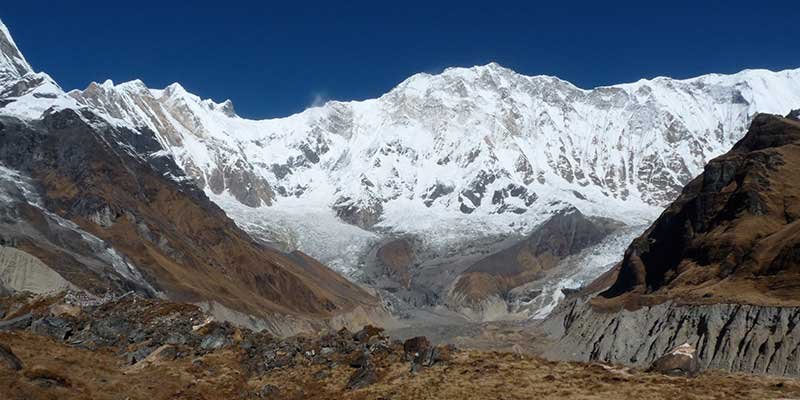Best time for Annapurna Base Camp Trek

- 13-Sep-2016
- 0
“Winter is an etching, spring a watercolor, summer an oil painting, and autumn a mosaic of them all.”
Time after time ranked as one of the top 10 treks in the world, the Annapurna Base Camp trek is a stunning blend of flame-red rhododendron forests, shady stands of oak, crystal-clear alpine rivers, ancient teahouses and jagged Himalayan peaks. The best times to go for trekking in Nepal are during two seasons: in autumn season during the months of September, October, and November and in spring season during the months of March, April and May. Both of these times are most recommended and favorable seasons for trekking in Nepal as you can get the most out of your adventure in terms of scenic unobstructed views, avoid heavy rainfall, warm days and perfect weather just as you wished to be in. As these are the best seasons, it is also the peak trekking season in Nepal when thousands of tourists visit Nepal to fulfill their desire of trekking around Himalayas. Therefore expect crowd at busy trails around Everest, and Annapurna regions. It’s a demanding trek, but the rewards speak for themselves. Visit tiny mountain hamlets, sample local delicacies and bathe in steaming thermal hot springs beneath an impossible blue sky.
Best time to visit:
1)October - November
October to November is the most popular trekking season in Nepal. It is the period just after the monsoon season when everything is refreshed, washed clean and vibrant. The weather is still warm during this period, even above 3,000 meters, and views over the mountains are usually stunning and clear. Night time temperatures will still get below zero, but the clear night skies filled with a billion bright stars will make up for this! Because of its popularity, this is the busiest period on the Annapurna route and tea-houses book up quickly.
2)December - February
This is a great season for those who do not mind cold weather in the Himalayas. Although more quiet, this is the coldest period in the Annapurna Region. Day time temperatures will be cool and the temperature over night will get well below zero depending on your altitude. At over 5,000 meters, Thorung La Pass is often deluged with snow and will close for days on end when this happens. Tea-houses remain open during this period unless snow closes the track. During this period views are often obscured by heavy cloud, however, there are still frequently clear days where vistas are at their best.
3)March- May
As the weather warms, trekkers once again take to the mountains making this period the second most popular trekking season in the Annapurna Region. By April much of the snow and cloud has dissipated, leaving the views crystal clear. A strange haze appears over the mountains during May, however, this is only visible at low altitudes and the sky becomes vividly clear once you reach the higher altitudes. The heat generally builds throughout May as the monsoon season approaches and trekking at low altitudes can get uncomfortably hot, especially in the Mustang Region. Please remember that spring time is also the period in the Annapurna Region when avalanches are most common.
4) July – August
Around these times the monsoon period reaches the Annapurna region. Although torrential downpours, plagues of leeches and mud-slides make the monsoon period generally not trek able throughout Nepal, this is not entirely true of the here, where rainfall, especially in the north, is far lower than most other regions. Therefore, if you’re willing to put up with rain on some parts of your trek, the ABC Trek remains a fairly good trekking option during the monsoon period. The added benefits of trekking during this period is, of course, far less crowds and many of the flora species flower at this time, making the trek particularly beautiful.
5) June – September
Generally rainfall occurs between June and September. A strong flow of moist air from the southwest follows the pre monsoon season. In Nepal the pre monsoon generally arrives in early June which is preceded by violent lightning and thunderstorms. The post monsoon season begins with a slow withdrawal of the monsoon. It normally occurs till the end of September. By this time, the harvest is completed and people are in a festive mood. The two biggest and most important Hindu festivals-- Dashain and Tihar (Dipawali)--arrive during this period, about one month apart. Avoid these months if you don’t want monsoon rain to be part of your trekking.
Nepal’s climate varies with its topography and altitude, ranging from the tropical to the arctic. Trekking in Nepal can be done throughout the year but with that being said trekking schedule can be determined by your choices too. As you can see Nepal has a very varied weather pattern which might or might not be preferred by you. So you have an option to contact a trekking agency around you and tell them what kind of weather you normally prefer so that the trekking agency can arrange the trekking plans accordance to your preferred weather condition.




